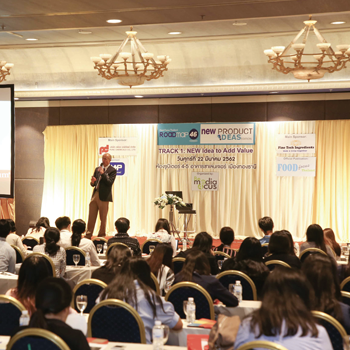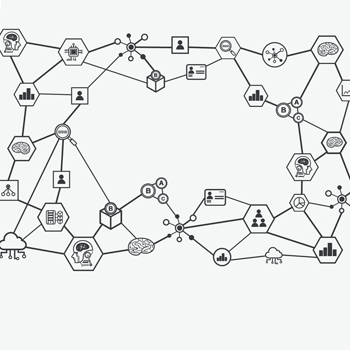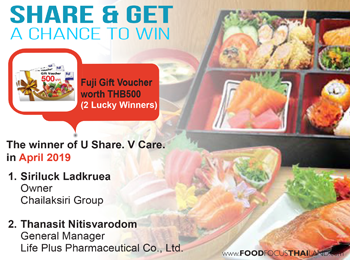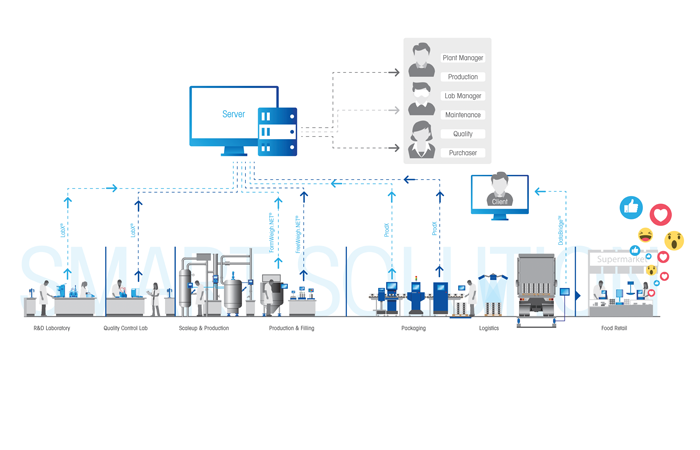เทรนด์บรรจุภัณฑ์ทั่วโลกปี 2562
By: David Luttenberger, CPP
Global Packaging Director
Benjamin Punchard, Ph.D.
Global Packaging Insights Director
Regina Maisevičiūtė-Haydon
Global Food & Drink Analyst
Mintel Group
Compiled and Translated By: กองบรรณาธิการ
นิตยสาร ฟู้ด โฟกัส ไทยแลนด์
Editorial Team
Food Focus Thailand Magazine
editor@foodfocusthailand.com
ในขณะที่เทคโนโลยีกำลังเชื่อมโยงและสร้างสรรค์นวัตกรรมบรรจุภัณฑ์ในโลกแห่งความเสมือนจริงอยู่นั้น ผู้บริโภคกลับต้องการแนวทางที่เป็นมิตรกับสิ่งแวดล้อมมาแก้ไขโลกแห่งความจริงที่พวกเขาเผชิญอยู่เทรนด์ 4 เรื่องต่อไปนี้ได้รวมประเด็นสำคัญทั้งหมดของเทรนด์บรรจุภัณฑ์ระดับโลกในปีนี้ไว้ โดยครอบคลุมเรื่องการเชื่อมโยงในรูปแบบเสมือนจริง นวัตกรรมทางวิศวกรรม อีคอมเมิร์ซ และความยั่งยืน
1. บรรจุภัณฑ์แห่งการเชื่อมต่อ
เทคโนโลยีหลายรูปแบบทำให้แบรนด์เชื่อมโยงบรรจุภัณฑ์ทางรูปลักษณ์ภายนอกสู่โลกแห่งความเสมือนจริง โดยบรรจุภัณฑ์แห่งการเชื่อมต่อนั้นกำลังทำให้เห็นความน่าสนใจใหม่ๆ ซึ่งได้รับแรงหนุนจากการขยายตัวของผู้ครองกรรมสิทธิ์อุปกรณ์ทางเทคนิคที่เชื่อมต่อกันทั่วโลกและความก้าวล้ำของเทคโนโลยีที่สามารถเชื่อมโยงบรรจุภัณฑ์สู่โลกออนไลน์ได้
2. ปิดช่องโหว่
ผู้บริโภครู้จักการรีไซเคิลบรรจุภัณฑ์บางชนิดมานานแล้ว และตอนนี้พวกเขาต้องการความสามารถในการรีไซเคิลที่เพิ่มมากขึ้นและเข้าใจถึงการรีไซเคิลว่าเป็นวิธีที่ให้ผลลัพธ์ดีจริงๆ
3. นวัตกรรมกล่องที่ตอบโจทย์
องค์ประกอบที่สำคัญของการพิจารณาเลือกซื้อสินค้าในการค้าปลีกแบบดั้งเดิมก็คือแบรนด์และข้อความที่สื่อลงบนบรรจุภัณฑ์ด้านนอก แต่ในทางอีคอมเมิร์ซแบรนด์กำลังเรียนรู้ว่าการสื่อสารด้วยข้อความและความเป็นแบรนด์บนบรรจุภัณฑ์นั้นควรแยกออกจากกันระหว่างบรรจุภัณฑ์ชั้นที่สองหรือกล่องเพื่อการขนส่งและให้นำการตกแต่งต่างๆ ไปไว้ที่บรรจุภัณฑ์ชั้นใน
4. พอกันทีกับพลาสติก
เมื่อร้านค้าปลอดถุงพลาสติกจำหน่ายสินค้าโดยไม่ให้ภาชนะในการใส่สินค้าที่ซื้อ นักช็อปจึงจะต้องนำภาชนะไปใส่เองและซื้อสินค้าตามน้ำหนัก ลักษณะดังกล่าวช่วยให้ผู้ซื้อสามารถซื้อสินค้าตามจำนวนที่ต้องการจริงๆ เป็นการป้องกันขยะที่เกิดจากอาหารและบรรจุภัณฑ์
As technology connects and innovates packaging in the virtual world, consumers demand eco-friendly solutions to clean up the real world. The four trends encompass broader themes of virtual connection, engineering innovation, e-commerce and sustainability, providing a
full view of the global packaging industry in 2019.
1. Connected packaging
Multiple technologies are enabling brands to connect physical packaging to the virtual world. Connected packaging is seeing renewed interest, driven by growth in ownership of connected devices worldwide and advancement in technologies that can link packaging to the online world.
2. Closing the loop
Consumers have been recycling some packaging for years. But they are now demanding the ability to recycle more and to understand how recycling really works.
3. Reinventing the box
In traditional retailing, a key component of purchase consideration is branding and messaging on the exterior of a package. In e-commerce, brands are learning that messaging and branding should be split between the secondary, or shipping container, and then shifting traditional decoration and copy to the interior.
4. Plastic free
Package-free stores offer loose, unpackaged products. The shopper is required to bring along their own containers and products are bought by weight. This enables the shopper to buy just the amount of product they need, preventing food and packaging waste.






